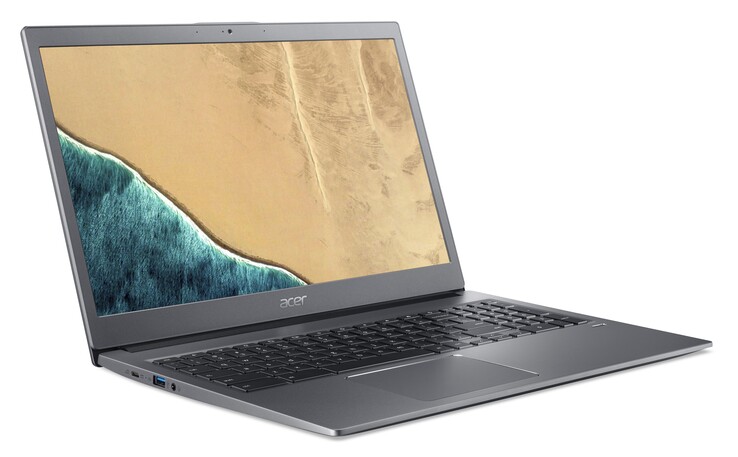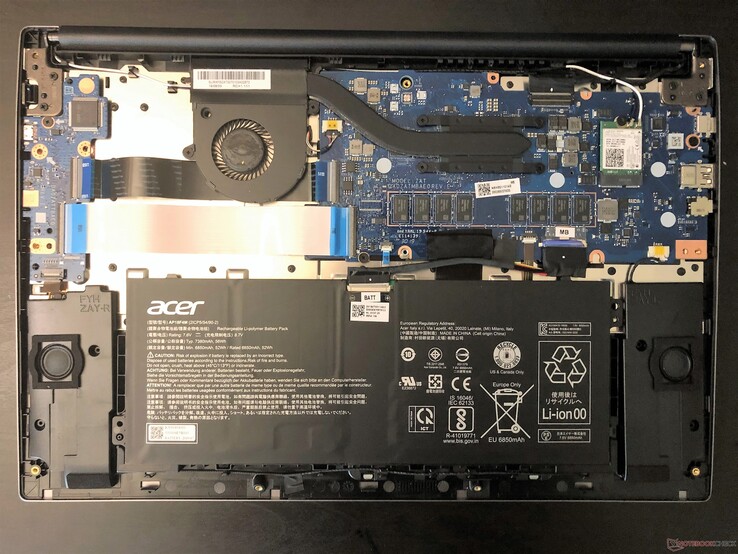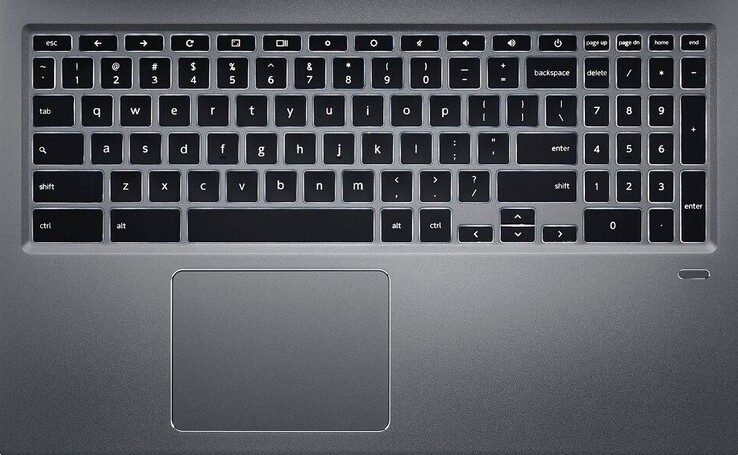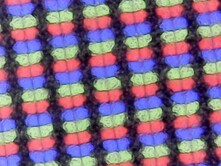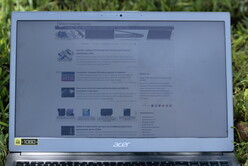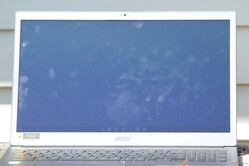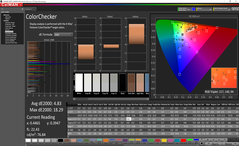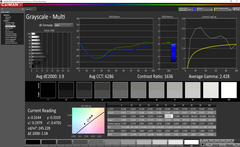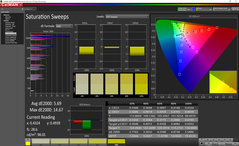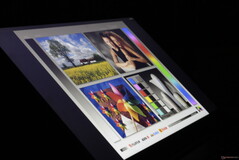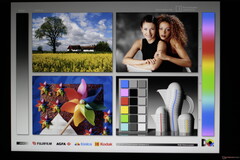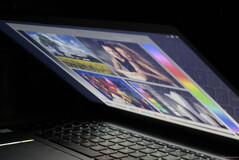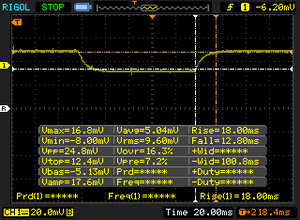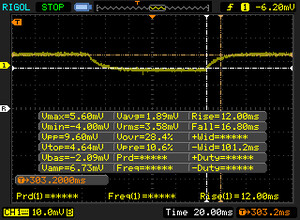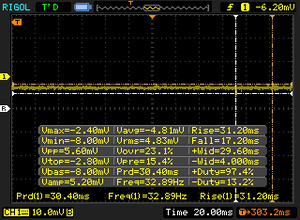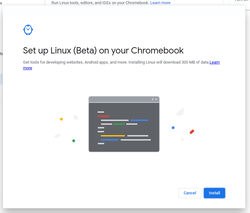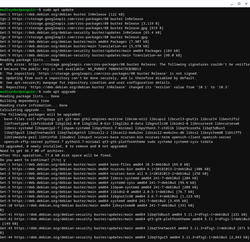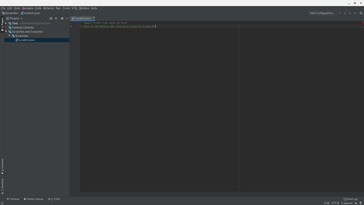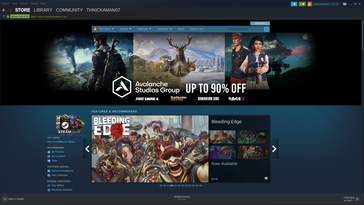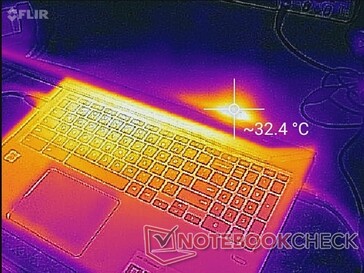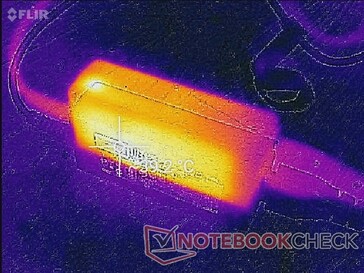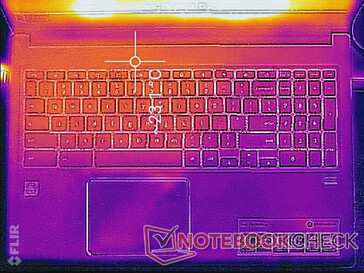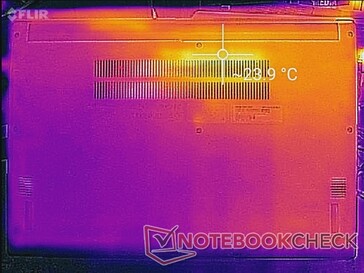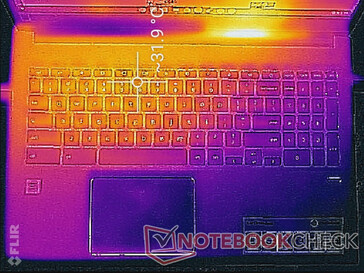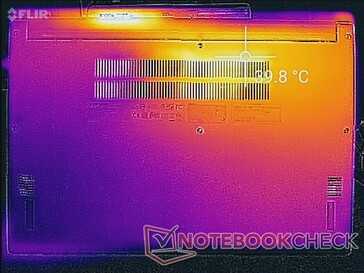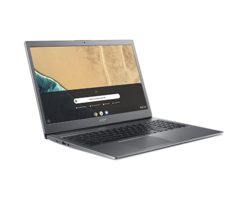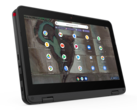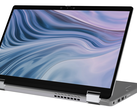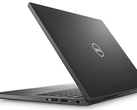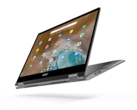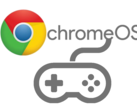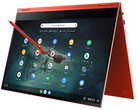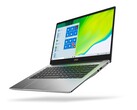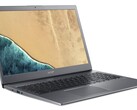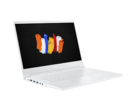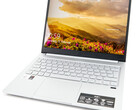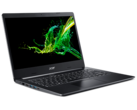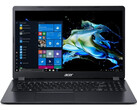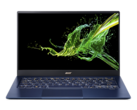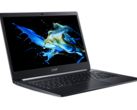Acer Chromebook 715 Laptop Review
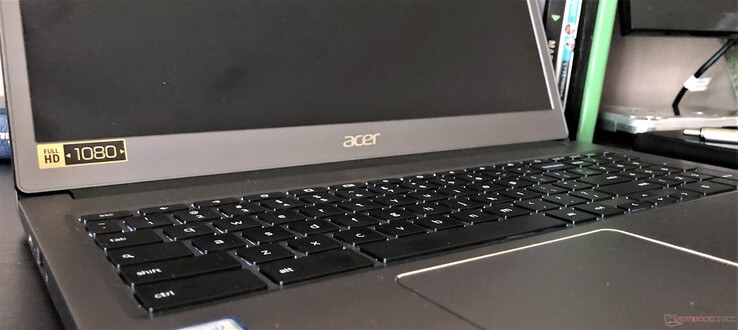
Chromebooks are often seen as cheap but limited laptops that are well-suited for the education market but fall flat in the business arena. However, Acer's latest Chromebook, the Chromebook 715, packs quite a punch in its aluminum case. Thanks to its Kaby Lake-R Core i5-8350U CPU and 8 GB of RAM, the Chromebook 715 stands heads and shoulders above other Chromebooks. This power comes at quite a cost, though; this model of the Chromebook 715 starts at US $899.
Direct competitors are few and far between; most Chromebooks run on low-powered chips. However, the Dell Inspiron 7486 Chromebook 14, HP Chromebook x360 14 G1, and Lenovo Yoga Chromebook C630 have similar configurations to the Acer Chromebook 715.
Rating | Date | Model | Weight | Height | Size | Resolution | Best Price |
|---|---|---|---|---|---|---|---|
| 82.8 % | 03/2020 | Acer Chromebook 715 CB715-1WT-527F i5-8350U, UHD Graphics 620 | 2 kg | 17.9 mm | 15.60" | 1920x1080 | |
| 87.2 % | 01/2019 | Dell Inspiron 7486 Chromebook 14 2-in-1 i3-8130U, UHD Graphics 620 | 1.8 kg | 17.7 mm | 14.00" | 1920x1080 | |
| 83.4 % | 04/2019 | HP Chromebook x360 14 G1 i5-8350U, UHD Graphics 620 | 1.6 kg | 16 mm | 14.00" | 1920x1200 | |
| 83.4 % | 02/2019 | Lenovo Yoga Chromebook C630-81JX0008UX i5-8250U, UHD Graphics 620 | 2 kg | 17.85 mm | 15.60" | 3840x2160 |
Case
The Chromebook 715 has a unibody aluminum chassis, reminiscent of the MacBook line and high-end Windows laptops. While the build quality is good, it falls short of the more premium devices it aims to mimic. There is a small bit of flex across the keyboard deck, but this is not noticeable when typing. The thin lid can easily be twisted and warped. The hinges are firm and hold the screen steady under normal use. They are too stiff for one-handed opening, however. The screen bobbles when touch input is used but steadies itself quickly. Unlike its convertible competition, the Chromebook 715's lid only opens 180°.
Overall, the case is excellent considering most Chromebooks are made from either plastic or cheap and thin metal. Gaps are tight and even. The matte finish across the laptop's body is resistant to fingerprints, which should keep the Chromebook 715 looking nice and clean. This is one of the best-built and best looking Chromebooks on the market.
The Chromebook 715 is similar in size and weight to the Lenovo Yoga Chromebook C630. However, Acer managed to fit a 15.6-inch FHD display in a similar footprint to the Yoga's, which has a 14-inch display. The Chromebook 715's weight is a manageable 2 kg, which gives it a robust feel when carried but is light enough to schlep all day. The weight is tipped toward the back of the device, so care should be taken when balancing the laptop on small surfaces.
Connectivity
Port selection on the Chromebook 715 is a bit sparse. There are two USB-C ports, one on either side of the machine. Both of these support power delivery to the laptop and display output. There is an additional USB-A port on the left side, as well as a headset jack (left) and microSD card slot (right). All of the USB ports are USB 3.1 Gen 1, meaning they offer transfer rates up to 5 Gbps.
SD Card Reader
The microSD reader is below-average. In our JPG copy test, which measures how fast a device can copy ~1 GB of photos, the Chromebook 715 managed about 51 MB/s, which is on par with the Dell Inspiron 7486 and a fair bit slower than the Lenovo Yoga Chromebook C630. The reader should be fine for small file transfers but will be too slow for other uses.
| SD Card Reader - average JPG Copy Test (av. of 3 runs) | |
| Lenovo Yoga Chromebook C630-81JX0008UX (Toshiba Exceria Pro M501 UHS-II) | |
| Dell Inspiron 7486 Chromebook 14 2-in-1 (Toshiba Exceria Pro M501 UHS-II) | |
| Average of class Office (8 - 82.7, n=49, last 2 years) | |
| Acer Chromebook 715 CB715-1WT-527F (Toshiba Exceria Pro M501 UHS-II) | |
Webcam
The webcam is serviceable. It captures video and photos at 1280x720. However, the image processor creates lots of digital noise, particularly in mid-tones like light browns and grays. The webcam will be fine for the occasional conference call, but considering the Chromebook 715 is intended for business users, its lackluster quality is disappointing.
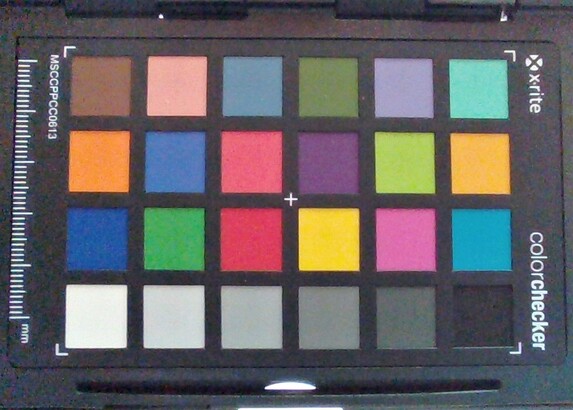
Security
The Chromebook 715 has a fingerprint reader, which is something not commonly found on Chromebooks. The reader is reliable and quick; fingerprints are read on the first try every time, and sign-ins take less than half a second.
Maintenance
Input Devices
Keyboard
One of the high points of the Chromebook 715 is its crisp keyboard. Key travel is a bit shallow, but feedback is firm. The keyboard is noisy; clatter is noticeable in a quiet office. The keys also feel cheap underhand. On the plus side, the keys are well-sized (15 x 15 cm, 5.9 x 5.9 in) and responsive. The overall experience is good; most typists will be happy, but the keyboard falls short of more premium devices.
The keyboard has a five-stage white backlight. The addition of a numeric keypad is a nice touch and is a boon for office workers that spend the day in spreadsheets. The numpad keys are a bit cramped, at 12 x 15 cm or 4.7 x 5.9 in.
Touchpad & Touchscreen
Like the keyboard, the touchpad is overall excellent with some minor drawbacks. Glide across the Corning Gorilla Glass surface is smooth. The pad is highly responsive, and tracking warrants no complaints. The clicking mechanism feels hollow, and the touchpad feels like it warps when clicked. The touchpad surface is roomy (10.7 x 7.8 cm, 4.2 x 3.1 in).
The Chromebook 715 can be configured with a 10-point multi-touch touchscreen. Touch input is accurate and elicits no concern.
Display
The Full HD IPS display is mediocre. The backlight averages just below 250 nits. While this is adequate for most indoor environments, users will need to turn the brightness all the way up in bright offices. Outdoor use is difficult as a result; due to the relatively dim backlight and semi-gloss finish, the screen is difficult to use under the sun. Viewing angles are similarly weak. The screen noticeably dims when viewed at 60° off-axis or more.
Otherwise, the screen is simply average. The contrast ratio is roughly 1000:1, which is typical for modern IPS displays. Color accuracy is decent. While not good enough for professional use (DeltaE2000 score of 3 or less), the color reproduction is fine for most users. There are no major complaints about the screen, but there is little praise as well.
| |||||||||||||||||||||||||
Brightness Distribution: 74 %
Center on Battery: 243.9 cd/m²
Contrast: 976:1 (Black: 0.25 cd/m²)
ΔE Color 4.83 | 0.5-29.43 Ø5
ΔE Greyscale 3.9 | 0.57-98 Ø5.3
Gamma: 2.428
| Acer Chromebook 715 CB715-1WT-527F IPS, 15.60, 1920x1080 | Dell Inspiron 7486 Chromebook 14 2-in-1 IPS, 14.00, 1920x1080 | HP Chromebook x360 14 G1 IPS, 14.00, 1920x1200 | Lenovo Yoga Chromebook C630-81JX0008UX IPS, 15.60, 3840x2160 | |
|---|---|---|---|---|
| Response Times | -23% | -19% | -24% | |
| Response Time Grey 50% / Grey 80% * | 28.8 ? | 40.8 ? -42% | 42 ? -46% | 38.4 ? -33% |
| Response Time Black / White * | 30.8 ? | 32 ? -4% | 28 ? 9% | 35.2 ? -14% |
| PWM Frequency | 962 ? | |||
| Screen | 34% | -16% | 20% | |
| Brightness middle | 243.9 | 348.1 43% | 267 9% | 281.2 15% |
| Brightness | 248 | 321 29% | 247 0% | 262 6% |
| Brightness Distribution | 74 | 85 15% | 88 19% | 76 3% |
| Black Level * | 0.25 | 0.28 -12% | 0.45 -80% | 0.24 4% |
| Contrast | 976 | 1243 27% | 593 -39% | 1172 20% |
| Colorchecker dE 2000 * | 4.83 | 1.75 64% | 3.63 25% | |
| Colorchecker dE 2000 max. * | 18.29 | 4.74 74% | 4.5 75% | |
| Greyscale dE 2000 * | 3.9 | 2.6 33% | 4.06 -4% | 3.3 15% |
| Gamma | 2.428 91% | 2.206 100% | 2.65 83% | 2.349 94% |
| CCT | 6286 103% | 6441 101% | 6058 107% | 6299 103% |
| Total Average (Program / Settings) | 6% /
23% | -18% /
-17% | -2% /
12% |
* ... smaller is better
Display Response Times
| ↔ Response Time Black to White | ||
|---|---|---|
| 30.8 ms ... rise ↗ and fall ↘ combined | ↗ 18 ms rise | |
| ↘ 12.8 ms fall | ||
| The screen shows slow response rates in our tests and will be unsatisfactory for gamers. In comparison, all tested devices range from 0.1 (minimum) to 240 (maximum) ms. » 81 % of all devices are better. This means that the measured response time is worse than the average of all tested devices (21.5 ms). | ||
| ↔ Response Time 50% Grey to 80% Grey | ||
| 28.8 ms ... rise ↗ and fall ↘ combined | ↗ 12 ms rise | |
| ↘ 16.8 ms fall | ||
| The screen shows relatively slow response rates in our tests and may be too slow for gamers. In comparison, all tested devices range from 0.2 (minimum) to 636 (maximum) ms. » 32 % of all devices are better. This means that the measured response time is better than the average of all tested devices (33.7 ms). | ||
Screen Flickering / PWM (Pulse-Width Modulation)
| Screen flickering / PWM not detected | |||
In comparison: 53 % of all tested devices do not use PWM to dim the display. If PWM was detected, an average of 17900 (minimum: 5 - maximum: 3846000) Hz was measured. | |||
Performance
With its Intel Core i5-8350U, the Acer Chromebook 715 would make for a peppy, if dated, Windows Ultrabook. However, thanks to the comparatively light demands of ChromeOS and Android apps, the Chromebook 715 flies through work with aplomb.
Processor & System Performance
Considering most Chromebooks opt for low-powered CPUs like Intel's Celeron line, the Acer Chromebook 715 feels overpowered. Similarly to the Dell Inspiron 7486 and Lenovo Yoga Chromebook C630 (which also use Intel Core chips), the Acer Chromebook 715 chews through anything thrown at it without much trouble. The Core i5-8350U glides through workloads without any hiccups. Content-heavy webpages load quickly, and scrolling is smooth. The ample 8 GB of DDR4 RAM is more than enough for Chrome OS; the machine easily handles multiple open tabs and Android apps.
UI navigation is buttery smooth; animations are fluid and flow gracefully. Heavier workloads, such as loading complex Google Sheets documents or streaming 4K video, are no problem. All said, this is perhaps the most powerful Chromebook to cross our test bench. Chrome OS power users will want to keep Acer in mind.
| Jetstream 2 - Total Score | |
| Average of class Office (72.4 - 418, n=71, last 2 years) | |
| Acer Chromebook 715 CB715-1WT-527F | |
| Average Intel Core i5-8350U (91.9 - 97.5, n=2) | |
| HP Chromebook x360 14 G1 | |
* ... smaller is better
Linux (Beta)
New to Chrome OS is Linux integration. While tinkerers have been able to run Linux distros via chroot since Chromebooks came into existence, Google has now integrated a Linux terminal directly into Chrome OS. The feature is still in beta, but the results are quite promising. Once installed via the setting menu, users are dumped into a Linux terminal that acts as a standard command line.
Linux for Chrome OS is based on Debian Stretch. As such, it uses apt for its package manager. Not all of the Chromebook's hardware is supported yet (e.g., the webcam, USB drives, etc.), and there are some kinks. However, apps can be installed from repositories. Most that we tried (including Kdenlive, PyCharm, and Steam) work well.
Games can be installed via Steam, but keep in mind the graphical limitations of Chromebooks, including the Chromebook 715. Additionally, GPU acceleration is not enabled by default, so users will need to do that. Enabling this feature goes beyond the scope of this review.
Storage
The Acer Chromebook 715 comes with either 64 or 128 GB of eMMC flash storage. On paper, this seems lilliputian compared to other notebooks, but keep in mind that Chrome OS integrates directly with Google Drive. Google continues to offer 100 GB of cloud storage free for two years with the purchase of a Chromebook. Additionally, a microSD card can expand local storage further. Still, installing Android and Linux apps will eat up space quickly, so users should keep their remaining storage space in mind.
While eMMC flash would normally be a death sentence for a modern notebook, Chrome OS and Android apps are generally small compared to Windows programs. The laptop boots from cold to the desktop in about 6 seconds, Chrome apps open near-instantaneously, and most Android apps launch quickly. Larger apps, such as games, will push the slow storage and require patience.
GPU Performance & Gaming
Considering Chrome OS and Android applications are typically designed around low-powered GPUs, even the integrated Intel UHD Graphics 620 feels monstrously powerful. Streaming 4K content at 60 fps typically jitters on a Chromebook, but Acer's machine handles such content without breaking a sweat. As mentioned, UI animations are silky smooth.
Thanks to Google's efforts to integrate Android applications into Chrome OS, Chromebooks have a large library of games for users to enjoy. Demanding games like Asphalt 9 and PUBG Mobile run smoothly.
Additionally, Linux support allows Chromebooks to play supported games via Steam. Keep in mind the limited hardware of most Chromebooks. That said, Chromebooks are now able to play some mainstream titles. Performance is not as good as equivalent Windows machines, primarily because Linux on Chrome OS uses OpenGL instead of DirectX for GPU support.
Emissions
System Noise
Fan noise is well-controlled with one peculiarity. Under most loads, the fan stays silent. Heavier work (such as video streaming) causes the fan to spin, but noise hovers around 30 dB(A) and is easily drowned out. Extended heavy loads cause the fan to randomly spin up to full speed, spiking at 44 dB(A), for a second or two before spinning back down to about 30 dB(A).
There is no noticeable coil whine.
| Acer Chromebook 715 CB715-1WT-527F UHD Graphics 620, i5-8350U, 64 GB eMMC Flash | Dell Inspiron 7486 Chromebook 14 2-in-1 UHD Graphics 620, i3-8130U, 128 GB eMMC Flash | HP Chromebook x360 14 G1 UHD Graphics 620, i5-8350U, 64 GB eMMC Flash | Lenovo Yoga Chromebook C630-81JX0008UX UHD Graphics 620, i5-8250U, 128 GB eMMC Flash | |
|---|---|---|---|---|
| Noise | 5% | -2% | 6% | |
| off / environment * | 28.4 | 28.7 -1% | 30.7 -8% | 28 1% |
| Idle Minimum * | 28.4 | 28.7 -1% | 30.7 -8% | 28 1% |
| Idle Average * | 28.4 | 28.7 -1% | 30.7 -8% | 28 1% |
| Idle Maximum * | 28.4 | 28.7 -1% | 30.7 -8% | 28 1% |
| Load Average * | 30.2 | 29.8 1% | 32.1 -6% | 29.2 3% |
| Load Maximum * | 44 | 29.8 32% | 33.4 24% | 32.4 26% |
* ... smaller is better
Noise Level
| Idle |
| 28.4 / 28.4 / 28.4 dB(A) |
| Load |
| 30.2 / 44 dB(A) |
 | ||
30 dB silent 40 dB(A) audible 50 dB(A) loud |
||
min: | ||
Temperature
The Acer Chromebook 715 keeps its cool under any load. When pushed (streaming 1080p video via YouTube in three tabs concurrently), the chassis stays relatively cool. There is a warm spot on the left palm rest and the rear of the bottom panel, but these do not get uncomfortably warm. Under normal office use, the chassis remains cool and comfortable.
(+) The maximum temperature on the upper side is 38.8 °C / 102 F, compared to the average of 34.2 °C / 94 F, ranging from 21.2 to 62.5 °C for the class Office.
(+) The bottom heats up to a maximum of 39 °C / 102 F, compared to the average of 36.7 °C / 98 F
(+) In idle usage, the average temperature for the upper side is 22.4 °C / 72 F, compared to the device average of 29.5 °C / 85 F.
(±) The palmrests and touchpad can get very hot to the touch with a maximum of 38.8 °C / 101.8 F.
(-) The average temperature of the palmrest area of similar devices was 27.7 °C / 81.9 F (-11.1 °C / -19.9 F).
Speakers
The speakers can get loud and remain clear at full volume. However, the sound is thin and tinny. Media consumption suffers as a result. The speakers are fine for watching a movie, but the experience is lackluster.
Acer Chromebook 715 CB715-1WT-527F audio analysis
(+) | speakers can play relatively loud (83 dB)
Bass 100 - 315 Hz
(-) | nearly no bass - on average 24.9% lower than median
(±) | linearity of bass is average (10.1% delta to prev. frequency)
Mids 400 - 2000 Hz
(±) | higher mids - on average 6.3% higher than median
(±) | linearity of mids is average (11.1% delta to prev. frequency)
Highs 2 - 16 kHz
(+) | balanced highs - only 2.7% away from median
(+) | highs are linear (5.2% delta to prev. frequency)
Overall 100 - 16.000 Hz
(±) | linearity of overall sound is average (23.2% difference to median)
Compared to same class
» 61% of all tested devices in this class were better, 9% similar, 30% worse
» The best had a delta of 7%, average was 22%, worst was 53%
Compared to all devices tested
» 65% of all tested devices were better, 6% similar, 29% worse
» The best had a delta of 4%, average was 25%, worst was 134%
Lenovo Yoga Chromebook C630-81JX0008UX audio analysis
(-) | not very loud speakers (70.8 dB)
Bass 100 - 315 Hz
(-) | nearly no bass - on average 18.8% lower than median
(±) | linearity of bass is average (12.8% delta to prev. frequency)
Mids 400 - 2000 Hz
(+) | balanced mids - only 1.8% away from median
(±) | linearity of mids is average (8.2% delta to prev. frequency)
Highs 2 - 16 kHz
(+) | balanced highs - only 2.4% away from median
(+) | highs are linear (6.6% delta to prev. frequency)
Overall 100 - 16.000 Hz
(±) | linearity of overall sound is average (20.3% difference to median)
Compared to same class
» 47% of all tested devices in this class were better, 8% similar, 45% worse
» The best had a delta of 6%, average was 21%, worst was 57%
Compared to all devices tested
» 47% of all tested devices were better, 8% similar, 44% worse
» The best had a delta of 4%, average was 25%, worst was 134%
Energy Management
Power Consumption
The Acer Chromebook 715 doesn't draw much power. Even under load, the laptop draws no more than 10 Watts on average. When pressed to its limits, the Chromebook 715 draws 42.4 Watts, but these kinds of loads are unrealistic in everyday use. The included power adapter is rated at 45 Watts. It should also be noted the Chromebook 715 can be charged with generic USB-C chargers, provided that they pump enough Watts.
| Off / Standby | |
| Idle | |
| Load |
|
| Acer Chromebook 715 CB715-1WT-527F i5-8350U, UHD Graphics 620, 64 GB eMMC Flash, IPS, 1920x1080, 15.60 | Dell Inspiron 7486 Chromebook 14 2-in-1 i3-8130U, UHD Graphics 620, 128 GB eMMC Flash, IPS, 1920x1080, 14.00 | HP Chromebook x360 14 G1 i5-8350U, UHD Graphics 620, 64 GB eMMC Flash, IPS, 1920x1200, 14.00 | Lenovo Yoga Chromebook C630-81JX0008UX i5-8250U, UHD Graphics 620, 128 GB eMMC Flash, IPS, 3840x2160, 15.60 | |
|---|---|---|---|---|
| Power Consumption | 6% | -18% | -25% | |
| Idle Minimum * | 1.3 | 1.6 -23% | 1 23% | 1.3 -0% |
| Idle Average * | 6.6 | 6.3 5% | 5.7 14% | 9.3 -41% |
| Idle Maximum * | 6.9 | 6.5 6% | 6.1 12% | 9.5 -38% |
| Load Average * | 9 | 8.1 10% | 23 -156% | 12.9 -43% |
| Load Maximum * | 42.4 | 28.6 33% | 36 15% | 43.3 -2% |
* ... smaller is better
Battery Life
One of the strengths of Chromebooks lies in longevity. The Acer Chromebook 715 is no exception; in our WiFi v1.3 battery test, which opens a new web page every 30-40 seconds while the display is set to 150 nits, the Chromebook 715 lasted a minute shy of 12 hours. Road warriors won't need to worry about the laptop dying before the workday is done. That said, the Pixelbook lasts about two hours longer thanks to its lighter processor.
| Acer Chromebook 715 CB715-1WT-527F i5-8350U, UHD Graphics 620, 56 Wh | Dell Inspiron 7486 Chromebook 14 2-in-1 i3-8130U, UHD Graphics 620, 56 Wh | HP Chromebook x360 14 G1 i5-8350U, UHD Graphics 620, 60.9 Wh | Lenovo Yoga Chromebook C630-81JX0008UX i5-8250U, UHD Graphics 620, 56 Wh | Google Pixelbook i5-7Y57, HD Graphics 615, 41 Wh | |
|---|---|---|---|---|---|
| Battery Runtime | |||||
| WiFi v1.3 | 719 | 637 -11% | 738 3% | 383 -47% | 835 16% |
Pros
Cons
Verdict
Chromebooks have come a long way. Every time a Chromebook crosses our review desk, it carries new features that continue to push Chrome OS. The Acer Chromebook 715 is perhaps the pinnacle of the Chromebook experience, but that depends on your needs.
As an office laptop, the Chromebook 715 measures up well against most other Ultrabooks. However, the limits of Chrome OS and the machine's small SSD will be a roadblock to those used to Windows. As a Chromebook, however, the Acer Chromebook 715 is one of the best options on the market.
The machine is snappy. Chrome OS programs, Android apps, and Linux navigation are responsive. The Chromebook 715 even has some gaming chops, which usually cannot be said about a Chromebook. The build quality is top-notch, and the keyboard and touchpad are great. Lastly, the fingerprint reader is quick, accurate, and adds an additional layer of security for office environments.
There are a few shortcomings. For one, it is not a convertible, limiting its usability. Both the Dell Inspiron 7486 and Lenovo Yoga Chromebook C630, its closest competitors, can be used as tablets, albeit bulky ones. The Acer Chromebook 715 can only be used as a standard laptop. Additionally, its keyboard is not as pleasant as the Inspiron 7486's and its display is lackluster compared to the Yoga Chromebook C630's.
The biggest sticking point is the price. At US $899, it is $200 more expensive than the Yoga Chromebook C630 and $300 more expensive than the Dell Inspiron 7486. Taking that into consideration, it's difficult to recommend the Acer Chromebook 715 over its competition.
All said, the Acer Chromebook 715 is the best 15.6-inch Chromebook available on the market. However, considering its limiting form factor and expensive price tag, we recommend you look to Dell for the best overall Chrome OS experience.
Acer Chromebook 715 CB715-1WT-527F
-
05/18/2020 v7
Sam Medley


 Deutsch
Deutsch English
English Español
Español Français
Français Italiano
Italiano Nederlands
Nederlands Polski
Polski Português
Português Русский
Русский Türkçe
Türkçe Svenska
Svenska Chinese
Chinese Magyar
Magyar